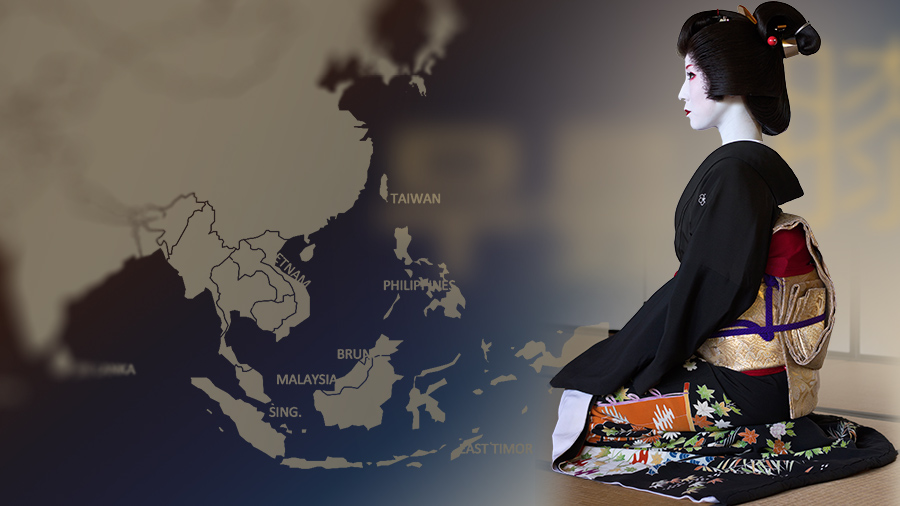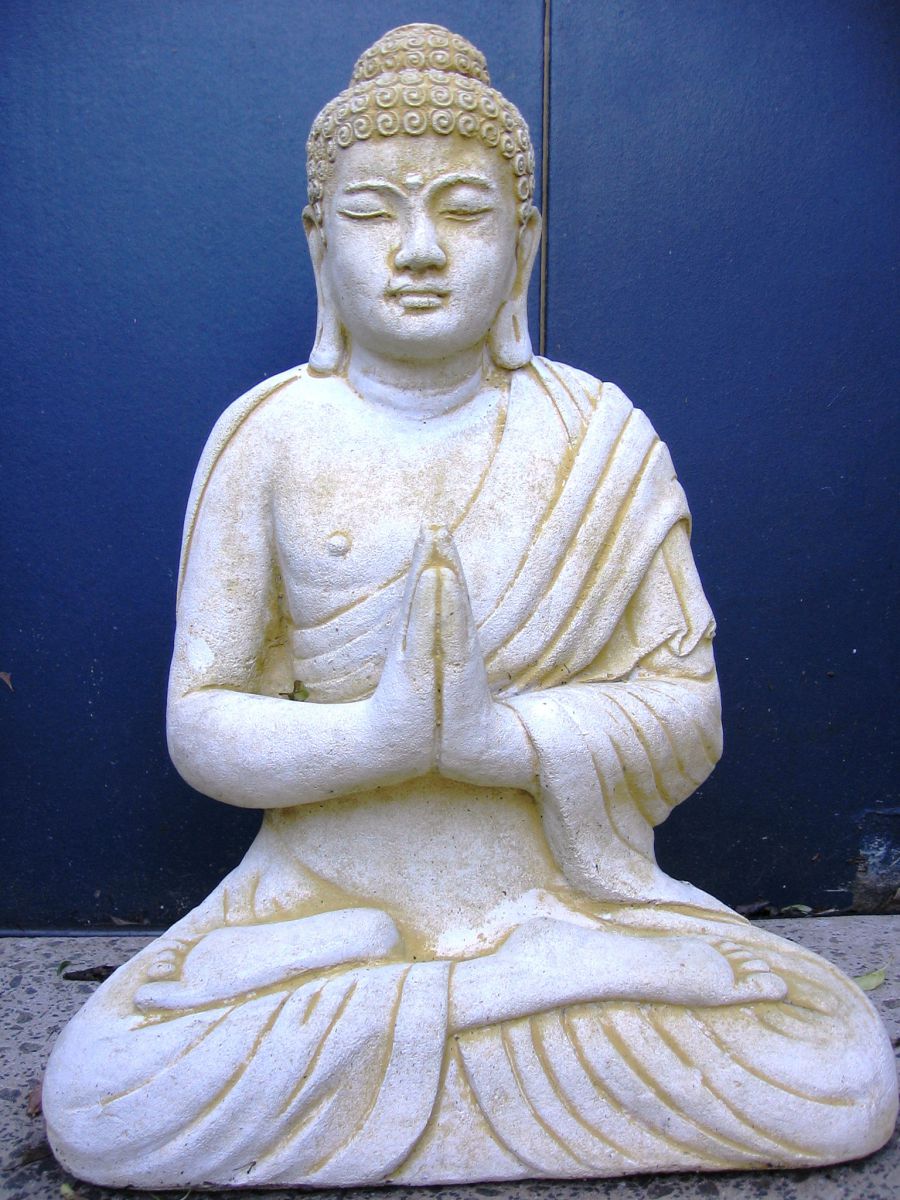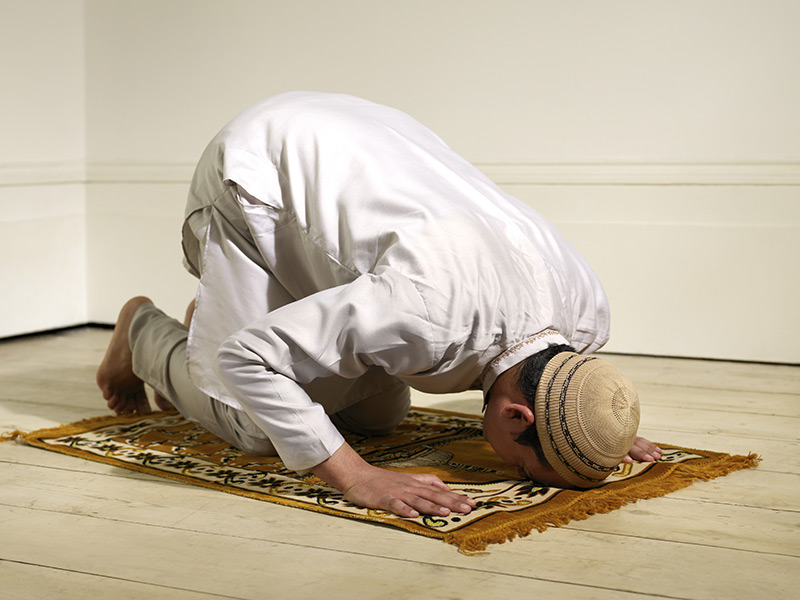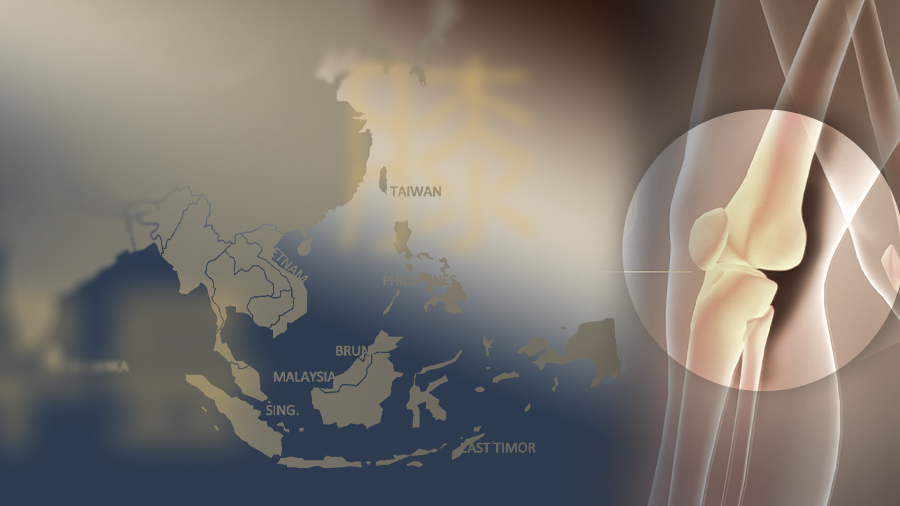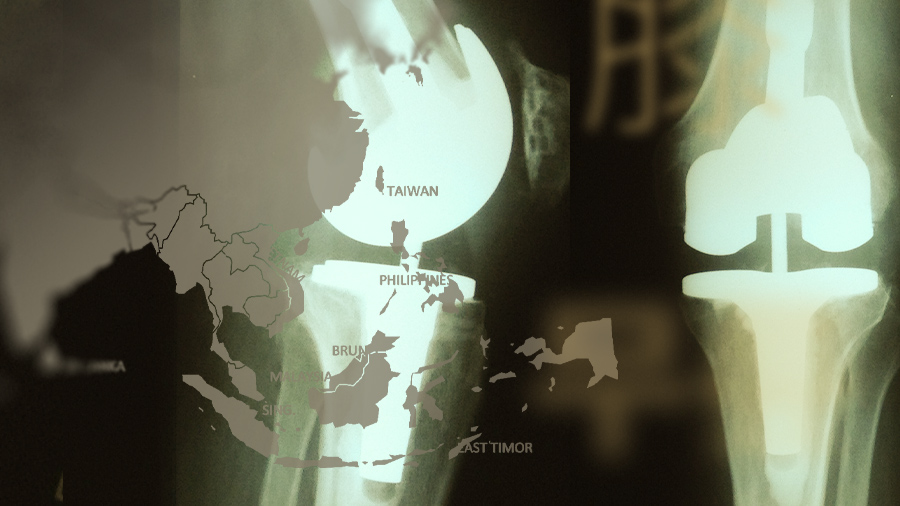The Asian knee through a cultural lens
Preview
The nearly three billion people living in the Asia region have a number of social and cultural demands placed on their knee joint that need to be considered by surgeons contemplating TKR. (Lifestyle and religious practices demand high flexion, for example)
When thinking about Asia, most images that come to mind are from postcards: a worker harvesting rice from a verdant green paddy; hundreds of people universally bent low over colorful prayer mats; the unique architecture of shrines, temples and mosques; families sitting together on the floor to share a meal; vibrant urban and rural landscapes.
While these images may present a stereotypical view of the people and places within the Asia region, the scenes also reveal some of the unique demands placed on the bodies of the people who live here.
United by diversity
The cultures of the people inhabiting the Asia region are as diverse as the landscape, yet from a physical perspective a number of practices unite them. Religion, lifestyle and work each place particular stresses on the knee joint that leads to common wear patterns as well as high expectations for post-operative mobility—patients want to be able to resume these demanding activities with a higher quality of life than before surgery. Myung Chul Lee, MD, PhD, Prof., a surgeon at the Seoul National University Hospital noted that kneeling, squatting, and sitting in a cross-legged position “require almost 165 degree or full knee flexion.”
There are many seated positions in Asian cultural traditions and religious rituals. The many ancient statues of Buddha and various Hindu gods in the lotus position illustrate how integral this way of sitting is to many traditional cultures in Asia [1].
Religious practices
The World Factbook, published by the US Central Intelligence Agency (CIA) cites 22 percent of the world’s population as Muslim [2]. Salat, or daily prayer, is required five times a day for both men and women from the age of seven. This translates into 70 hip and knee flexion each day [3], which is not insignificant, especially when considered in addition to everyday activities.
Asian Muslims religious activities develop, encourage and maintain higher range of motion (ROM). Muslim prayer includes standing, bowing, sitting and prostration. A 2015 study by Ariff et al [4] aimed to determine the average ROM for hips and knees in young Malaysian men [mean age = 22] during various prayer postures [See image below]. The researchers found that the sitting posture demanded the most flexion from the knee (152 degrees) while maximum flexion for the hip was seen during prostration (141 degrees). They noted that ROM declined with advanced age.
The researchers also pointed out that when compared to similar ROM studies with subjects from other countries (Iran, Saudi Arabia) their data varied by 10 to 20 degrees, indicating a cultural and geographical influence. They suggested orthopedic specialists should determine normative ROM data for local populations.
In a 1991 metastudy of ROM in US subjects Roach and Miles [5] stated that Western textbooks report a wide range of ‘normal’ knee ROM: from 130 to 150 degrees. African American and Caucasian men (average age = 32) were found to have mean ROM of 128 and 134 degrees, respectively—significantly less than what was reported in the similarly aged population in the Malaysian study.
Knees of Saudi Arabian patients undergoing TKR showed “more pronounced anteromedial and posterolateral cartilage wear patterns” when compared to similar North American patients [6]. Those with ACL-deficient knees showed the worst cartilage wear. They attributed the cultural practices of squatting or kneeling to altered knee mechanics and differing wear patterns.
In addition to religious requirements, lifestyle activities also contribute to the need for high knee ROM in the Asian population. Many daily activities take place while on the floor or ground in squatting, or cross-legged positions.
Read the full article with your AO login
- Floor culture
- Working on the knees
- Predictor of mortality?
- A changing population
- Obesity stresses knees
- Aging populations
- References
Additional AO resources
Access videos, tools, and other assets to learn more about this topic.
- Upcoming events: AO Recon Course finder
Contributing experts
This series of articles was created with the support of the following specialists (in alphabetical order):
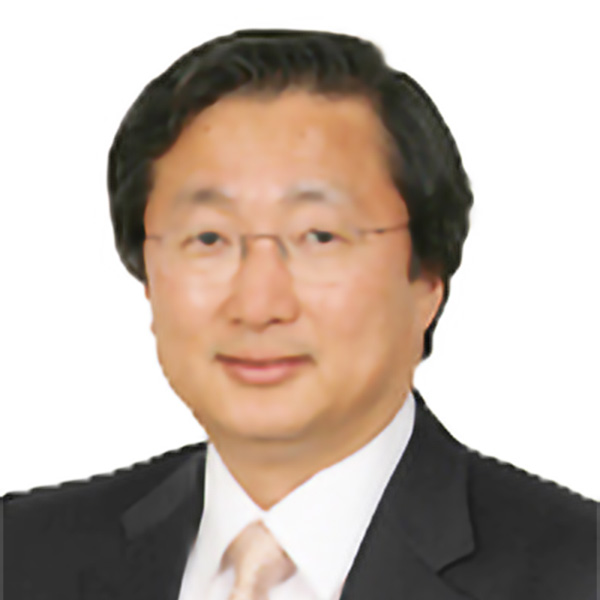
Myung-Chul Lee
Seoul National University Hospital
Seoul, South Korea
This issue was created by Word+Vision Media Productions, Switzerland
References
- https://en.wikipedia.org/wiki/Sitting
- https://en.wikipedia.org/wiki/List_of_religious_populations
- Gibson T, Hameed K, Kadir M et al (1996) Knee pain amongst the poor and affluent in Pakistan. Br J Rheumatol. Feb;35(2):146-9. http://www.ncbi.nlm.nih.gov/pubmed/8612027
- Ariff MS , Arshad AA , Johari MH et al (2015) The Study On Range Of Motion Of Hip And Knee In Prayer By Adult Muslim Males. A Preliminary Report. International Medical Journal Malaysia. Vol.14[1] http://iiumedic.net/imjm/v1/download/
Volume%2014%20No%201/3%20Original%20Articles/ IMJM%20Vol14No1%20Page%2049-58%20The%20Study%20On%20Range %20Of%20Motion%20Of%20Hip%20And%20Knee%20In.pdf - Roach KE, Miles TP (1991) Normal hip and knee active range of motion: the relationship to age. Phys Ther. 71:656-65. http://ptjournal.apta.org/content/71/9/656.long
- Hodge WA, Harman MK, Banks SA (2009) Patterns of knee osteoarthritis in Arabian and American knees. J Arthroplasty. Apr;24(3):448-53. doi: 10.1016/j.arth.2007.12.012. Epub 2008 Apr 18.
- Khalaf H ( 2010) The curious case of ‘Arab knee’ TheNational. Pub. Feb 22. http://www.thenational.ae/news/uae-news/health/
the-curious-case-of-arab-knee) - https://en.wikipedia.org/wiki/Ondol
- Clark D (2000) Culture and Customs of Korea. Greenwood. ISBN-13: 978-0313360916. https://www.google.ca/url?sa=t&rct=j&q=&esrc=s&
amp;source=web&cd=1&cad=rja&uact=8 &ved=0CB0QFjAAahUKEwijjprVv8LHAhVHlYgKHRCbDdM& url=http://www.arabgeographers.net/vb/attachments/attachments/ arab2243/&ei=WXbbVeP9O8eqogSQtraYDQ&
usg=AFQjCNEFJfi2Y1D4fKIbWeybJEP7i1aAHw&sig2=ZalwZ0u8J3GHqui5pj3p1w - http://www.japan-talk.com/jt/new/tatami-floors
- https://en.wikipedia.org/wiki/Tatami
- http://www.sanskritimagazine.com/vedic_science/benefit-of-sitting-eating-floor/
- Zhang Y, Hunter DJ, Nevitt MC et al (2004) Association of squatting with increased prevalence of radiographic tibiofemoral knee osteoarthritis: the Beijing Osteoarthritis Study. Arthritis Rheum. Apr;50(4):1187-92.
- Kim HA, Kim S, Seo YI et al (2008) The epidemiology of total knee replacement in South Korea: national registry data. Rheumatology (Oxford). Jan; 47(1):88-91.
- Kim I, Kim HA, Seo YI et al (2010) The prevalence of knee osteoarthritis in elderly community residents in Korea. J Korean Med Sci. Feb; 25(2):293-8.
- Toğrol E (2000) Bilateral peroneal nerve palsy induced by prolonged squatting. Mil Med. Mar;165(3):240-2.
- http://www.miusa.org/resource/tipsheet/toilets
- Brito LB, Ricardo DR, Araújo DS et al (2014) Ability to sits and rise from the floor as a predictor of all-cause mortality. Eur J Prev Cardiol. Jul;21(7):892-8. doi: 10.1177/2047487312471759. Epub 2012 Dec 13.
- Biswas A, Oh PI, Faulkner GE et al (2015) Sedentary Time and Its Association With Risk for Disease Incidence, Mortality, and Hospitalization in Adults: A Systematic Review and Meta-analysis. Annals of Internal Medicine 162 (2): 123–32. doi:10.7326/M14-1651.PMID 25599350.
- Proper KI; Singh AS, van Mechelen W et al (2011) Sedentary behaviors and health outcomes among adults: a systematic review of prospective studies. American Journal of Preventive Medicine 40 (2): 174–182. doi:10.1016/j.amepre.2010.10.015. ISSN 1873-2607. PMID 21238866. Retrieved 2015-05-08.
- Zhang Y, Xu L, Nevitt MC et al (2001) Comparison of the prevalence of knee osteoarthritis between the elderly Chinese population in Beijing and whites in the United States: The Beijing Osteoarthritis Study. Arthritis Rheum. Sep;44(9):2065-71.
- http://www.worldobesity.org/aboutobesity/
- Gillespie GN, Porteous AJ (2007) Obesity and knee arthroplasty. The Knee. 14(2):81-86.
- Ariff MS, Arshad AA, Johari MH et al (2015) The Study On Range Of Motion Of Hip And Knee In Prayer By Adult Muslim Males. A Preliminary Report. International Medical Journal Malaysia. Vol.14[1] http://iiumedic.net/imjm/v1/download/Volume%2014%20No%201/3%20Original%20Articles/
IMJM%20Vol14No1%20Page%2049-58%20The%20Study%20On%20Range%20Of%20Motion %20Of%20Hip%20And%20Knee%20In.pdf - http://www.worldobesity.org/aboutobesity/
- Gibson T, Hameed K, Kadir M et al (1996) Knee pain amongst the poor and affluent in Pakistan. Br J Rheumatol. 35(2):146-9. http://www.ncbi.nlm.nih.gov/pubmed/8612027
- https://www.nia.nih.gov/research/dbsr/world-population-aging
- http://unu.edu/publications/articles/health-and-healthcare-systems-in-southeast-asia.html
- Kennedy JW, Johnston L, Cochrane L et al (2013) Total knee arthroplasty in the elderly: does age affect pain, function or complications? Clin Orthop Relat Res.Jun;471(6):1964-9. doi: 10.1007/s11999-013-2803-3. Epub 2013 Jan 25.


